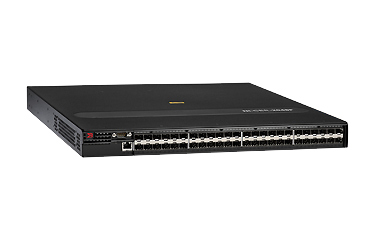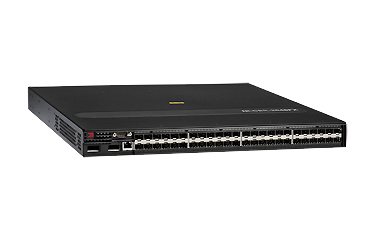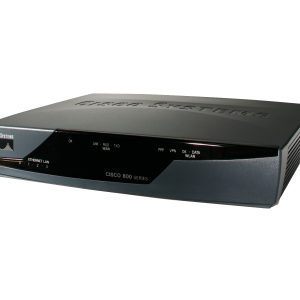Brocade NetIron CER 2000 Series PN NI-CER-2024C-RT-AC
Call for pricing
Brocade NetIron CER 2000 Series (PN NI-CER-2024C-RT-AC)
Brocade NetIron CER 2000 Series compact routers are purpose-built for high-performance Ethernet edge routing, MPLS, and SDN. These 10 GbE-enabled fixed-form routers can store a complete Internet table and are ideal for supporting routing applications cost-effectively in Metro Ethernet, data center, and campus networks.
In addition to providing unmatched route scalability in a flexible form, the NetIron CER 2000 supports OpenFlow, providing an SDN solution for programmatic control of the network.
Product Description
Brocade NetIron CER 2000 Series
Part Number: NI-CER-2024C-RT-AC
Brocade NetIron CER 2000 Series routers are purpose-built to help save on space, power, and cooling expenses while extending wire-speed IP and Multi-Protocol Label Switching (MPLS) services to the network edge without compromising performance.
The NetIron CER 2000 is available in 24- and 48-port 1 Gigabit Ethernet (GbE) copper and hybrid fiber configurations with four or two 10 GbE ports. To ensure high performance, all the ports are capable of forwarding IP and MPLS packets at wire speed without oversubscription. With less than 5 watts/Gbps of power consumption and up to 136 Gbps of throughput, the NetIron CER 2000 meets the dynamic needs for high-bandwidth services while reducing the carbon footprint.
A broad set of highly scalable IP unicast and multicast routing features, combined with a low total cost of ownership, makes the NetIron CER 2000 an ideal choice for service providers and enterprises that want to deliver Layer 2 and Layer 3 business services through a single, easy-to-manage platform.
Software-Defined Networking (SDN) is a powerful new network paradigm that provides increased agility and programmatic control of network infrastructure for a new class of IT applications to meet critical business needs.
The NetIron CER 2000 Series enables SDN by supporting the OpenFlow protocol, which allows communication between an OpenFlow controller and the OpenFlow-enabled NetIron CER 2000 router.
The NetIron CER 2000 Series delivers OpenFlow 1.3 in hybrid mode, meaning organizations can simultaneously deploy traditional Layer 2 and Layer 3 forwarding with OpenFlow on the same system.
This unique capability enables network operators to integrate OpenFlow into existing networks, providing the benefits offered by SDN for specific flows while the remaining traffic is routed as before.
Important Information
We are not only looking to sell you only one time we look to build long business relation with you.
Warranty & Support
We offer manufacture warranty plus our ICT warranty.
If you need any technical assistant, our expert technicians are always available to help you without any additional cost.
Contact us now and let our team help you.
CER 2024C RT, 1 500W AC, 2X10G OPT, BASE SW
Comprehensive IPv4/IPv6 routing support based on the Brocade Multi-Service IronWare OS
High-performance, robust routing using Forwarding Information Base (FIB) programming in hardware
RIP/RIPng, OSPF/OSPFv3, IS-IS/IS-IS for IPv6, and BGP-4/BGP-MP for IPv6
Secure Multi-VRF routing for supporting virtual routing applications over non-MPLS backbones
VRRP and VRRP-E
8-path Equal-Cost Multi-Path (ECMP)
Up to 1.5 million IPv4 unicast routes in FIB
Up to 256,000 IPv6 unicast routes in FIB
Connecting IPv6 islands over IPv4 MPLS using IPv6 Provider Edge (6PE) routers
6VPE enabling IPv6 multitenancy to the edge of the cloud
BFD Holdover for OSPFv2/3 and IS-IS
BDF for Static Routes
BDF for OSPFv3
ND6 IPv6 Prefix Suppress
IS-IS Graceful Restart Helper Mode
127 bit IPv6 interface addresses
Software-Defined Networking (SDN)
OpenFlow 1.3: QoS (for metering and enqueue), Group Table (select and fast failover), QinQ (TAG type auto-recognition), Active-Standby Controller, IPv6, Transport Layer Security (TLS) 1.2 (controller interface)
Brocade OpenFlow hybrid switch mode for OpenFlow capabilities on the same system as traditional routing or switching features
Support for up to 32,000 OpenFlow flows
Rich multicast support
IPv4 multicast protocols, including PIM-DM, PIM-SM, and PIM-SSM
IPv6 multicast support, including PIM-SM/SSM and MLD
IGMP v2/v3 routing and snooping support
IGMP static group support
Multicast boundaries to facilitate admission control
Up to 6000 multicast groups in hardware
Multicast traffic distribution over Link Aggregation Groups (LAGs)
Efficient egress interface-based replication to maximize performance and conserve buffers
Multicast for MPLS
Multicast ECMP
Advanced MPLS features
Comprehensive MPLS signaling and path calculation algorithms for both traffic-engineered and non-traffic-engineered applications: OSPF-TE, IS-IS-TE, RSVP-TE, and CSPF
MPLS Fast ReRoute (FRR) and hot standby paths for traffic protection
Label Distribution Protocol (LDP)
Advanced MPLS services: IP over MPLS, VLL, VPLS, Layer 3 VPN, routing over VPLS
BFD for RSVP-TE LSPs
LDP Inbound and Outbound FEC Filtering
RSVP Liberal Bypass LSP Selection
Link Protection Request for RSVP Fast Reroute
RSVP Hello Messages for Neighbor Failure Detection
RSVP TE Link Metric for CSPF Computation
Static Route over RSVP LSP
Advanced Carrier-grade Ethernet services
Up to 128,000 MAC addresses
4000 VLANs/S-VLANs/B-VLANs
Ability to reuse VLAN-ID on each port using the Brocade Ethernet Service Instance (ESI) framework
MPLS Layer 2 VPN services
IEEE 802.1ad Provider Bridges
IEEE 802.1ah Provider Backbone Bridges
IEEE 802.1ag Connectivity Fault Management
ITU Y.1731 OAM functions and mechanisms for Ethernet-based networks
Comprehensive set of Layer 2 control protocols: Brocade MRP/MRP-II, VSRP, RSTP, MSTP, and ITU G.8032 Ethernet Ring Protection (ERP version 1 and 2) and Multi-Chassis Trunking (Active/Active mode or Active/Standby mode for Active-Passive access for client ports)
E-LINE (EPL and EVPL), E-LAN, and E-TREE support
Protocol tunneling of Bridge Protocol Data Units (BPDUs)
MEF 9, MEF 14, and MEF 21 certification
Support for link aggregation using either IEEE 802.3ad LACP or static trunks
Up to 12 ports per LAG
Support for single-link Link Aggregation Control Protocol (LACP)
Deep egress buffering for transient bursts in traffic
64 to 192 MB of buffering, based on configuration
Advanced QoS
Inbound and outbound two-rate, three-color traffic policers with accounting
Eight queues per port, each with a distinct priority level
Multiple queue servicing disciplines: Strict Priority, Weighted Fair Queuing, and hybrid
Advanced remarking capabilities based on port, VLAN, PCP, DSCP, or IPv4 flow
Egress port and priority-based shaping
QoS for Mmanagement protocols (SSH and Telnet)
Comprehensive hardware-based security and policies
Hardware-based Layer 3 and Layer 2 ACLs (both inbound and outbound) with logging
Ability to bind multiple ACLs to the same port
Hardware-based receive ACLs
Hardware-based Policy-Based Routing (PBR)
Additional security capabilities
Port-based network access control using 802.1x or MAC port security
Root guard and BPDU guard
Broadcast, multicast, and unknown unicast rate limits
ARP inspection for static entries
Advanced monitoring capabilities
Port- and ACL-based mirroring that enables traffic mirroring based on incoming port, VLAN-ID, or IPv4/TCP/UDP flow
Hardware-based sFlow sampling that allows extensive Layer 2-7 traffic monitoring for IPv4 and Carrier Ethernet services
ACL-based sFlow support
sFlow support for MPLS LSR and LER interfaces
Interface capabilities
Jumbo frame support up to 9216 bytes
Optical monitoring of SFP and XFP optics for fast detection of fiber faults
UDLD and LFS/RFN support
Intuitive, comprehensive status indication via LEDs
Per-port UP/DOWN/ACTIVITY indicators
FAN tray status
Power supply status
Redundancy
Redundant, hot-swappable AC/DC power supplies at the rear
Removable fan tray with fan redundancy


